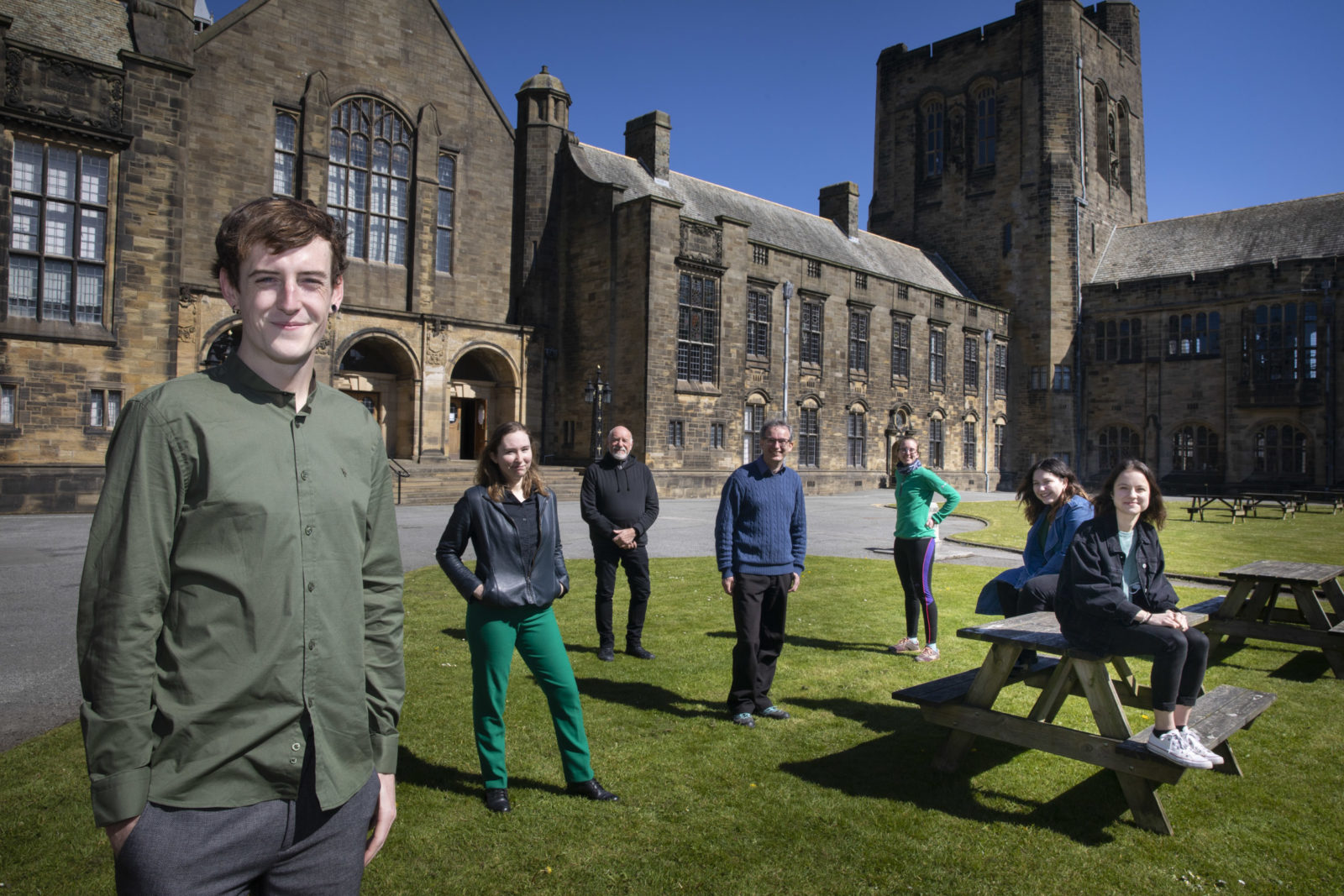A North Wales company has invented a revolutionary ice-making machine powered by renewable energy to replenish melting polar ice caps in the battle against climate change.
The prototype developed by Real Ice, formed by a team of graduates and current students at Bangor University, is being sent out to be tested in the icy wastes of Northern Canada.
The project has caught the attention of the United Nations Development Programme and Real Ice could be sharing screen time with Hollywood superstar Jessica Alba as they have been filmed for a video sponsored by car-making giants Hyundai as part of the ‘for Tomorrow’ initiative.
It is due to be broadcast across all the major social media platforms to a worldwide audience a week after global environmental Earth Day on April 22.
The Bangor team’s ice-maker, christened the Real Ice Re-Icing Machine, will pump water up from under the ice cap to the surface where temperatures as low as -50C quickly freeze it, creating new layers of the sea ice the wildlife and the people of the region need to survive.
The plan is for the indigenous Inuit people to own the machines, maintaining them and moving them to new areas regularly while earning carbon credits which can be sold to companies to offset their fossil fuel use.
Real Ice’s Managing Director is Dubliner Cian Sherwin who heads a team including graduates and students from the USA, France and Finland.
Cian is a graduate in zoology with a special interest in snakes which have fascinated him since he was a young boy but which are noticeably absent from the North Pole.
He said: “I was passionate about snakes and have kept reptiles since I was a child which was why I came to Bangor six years ago because it was one of the only universities in Europe to do a zoology course with herpetology – the study of reptiles and amphibians.
“But since graduating I’ve become increasingly interested in this project to restore the sea ice which is melting so quickly that it threatens to cause us all serious problems in future.
“We have developed an ice-making machine powered by the wind which is easy to move and the plan would be for local Inuit people to be employed in this project.
“The foundations of their communities are literally melting away as the loss of their way of life is causing social problems including loss of culture and livelihood and the migration of the young to find work.
“One of the main contributors in the rise in sea temperature causing the polar ice to melt is that thinner ice leads to more of the sun’s heat being absorbed rather than reflected back out which speeds up thawing.
“Reflectivity of the ice is known as the Albedo effect and by increasing this reflectivity we can reduce the amount of heat absorbed by the sea and melting ice.
“Sea with ice and snow covering it will reflect 90 per cent of the solar rays from the sun with only six per cent being reflected with no snow or ice cover.
“If we can thicken the ice then that heat will again be reflected out and help prevent the loss of the polar sea ice.”
The ice-making machine is mainly the work of Nick Penny, a Bangor Engineering graduate, who has carried out much of his research at the University’s School of Computer Science and Electronic Engineering, in collaboration with engineering students undertaking their team projects.
The latest prototype is a small-scale model of a machine designed to be five metres tall powered by a ten-metre diameter wind turbine and fitted with a central drill to bore through the ice to reach the sea water below.
It’s relatively small size and low weight means it can easily be transported to new sites by local people with their motor-powered skidoos.
It is to be trialled at the Canadian High Arctic Research Station at Cambridge Bay from November to March next year, during a winter when temperatures, currently at -25C, can plunge below -50C and where wind chill can make it seem more like -70C.
Cian and the core team of seven have been developing the project with the help of an advisory team including experts from the North Wales Business Academy and they’re banking their time on the project in the hope it will pay dividends in the future.
They also hope it will pay dividends for the Inuit and Cian said: “We want to collaborate with the Inuit up there because we need to understand what they want from this and what they don’t want.
“They’re losing their livelihoods and their culture and traditional way of life – their houses are literally falling down so there’s a lot at stake for them.
“They are experiencing social problems including young people moving out to find work so if we can provide a job and additional income that’s a positive and at the same time animals like polar bears are losing their habitat and that’s having an impact on their distribution and population.”
The film featuring Real Ice’s project will be broadcast on the YouTube, Instagram, Facebook and Twitter sites for the Hyundai Motor Company, for Tomorrow and UNDP on Thursday, April 29.
The for Tomorrow initiative, with the support of the UNDP Accelerator Labs, aims at connecting sustainable innovators, such as Real Ice, around the world to celebrate grassroots innovations and helps achieve the 2030 sustainable development goals.








Leave a Reply
View Comments